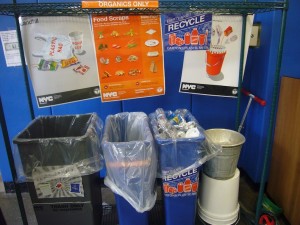We have much more to do and your continued support is needed now more than ever.
4 School Year Resolutions for Going Green
Guest post by Jessica Brown
Back to school is the perfect time for making school year resolutions to go green. Habits developed in September can easily last throughout the year. By taking the time to discuss how our actions impact our planet with our children, we show them that it matters and instill eco-friendly values and a sense of responsibility that they can carry with them throughout their lifetime. Here are 4 achievable school year resolutions for going green this year from National Wildlife Federation’s Eco-Schools USA program:

Make it Healthy. What you pack for lunch matters just as much as the container itself. Send your child to school with high quality, less processed, and more healthy foods to fuel their day such as plenty of fruits and vegetables and whole grains. You may get more buy in when you let your child make some of their own choices. By offering a selection of fruits and vegetables and letting your child choose two or three, you are giving them the power to make their own smart choices. Better yet, grow your own produce in a home, school, or community garden! Encourage your school to do the same by providing healthy, local options in the school lunch line. Investigate the possibility of connecting with area farms and incorporating local food into your cafeteria. The Farm to School Network is a great resource.

Schedule Outdoor Free Time. Green up and slow down after school by making sure to “schedule” unscheduled free time outdoors. Studies show that time spent outdoors and active helps children grow lean and strong, enhances imaginations and attention spans, decreases aggression, and boosts classroom performance. In addition, children who spend time in nature regularly are shown to become better stewards of the environment. Encourage your school to get outdoors for recess and consider holding a regularly scheduled class outdoors for a fresh change.
Want to know more? Ask your school to register with National Wildlife Federation’s Eco-Schools USA program. It’s free and easy and gives educators access to an abundance of free resources, tips, curriculum guidelines and best practices.
 Jessica Brown is a Communications Consultant with National Wildlife Federations Eco-Schools USA program in New Jersey. Jessica has over 10 years of experience in philanthropy and communications in the non-profit sector and with conservation organizations. She enjoys hiking and learning how to garden with her kids.
Jessica Brown is a Communications Consultant with National Wildlife Federations Eco-Schools USA program in New Jersey. Jessica has over 10 years of experience in philanthropy and communications in the non-profit sector and with conservation organizations. She enjoys hiking and learning how to garden with her kids.





















